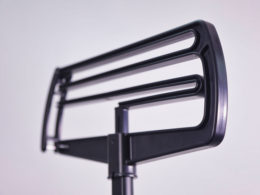Russell Williams founded Invention
Home over 6 years ago to assist inventors with the marketing and
licensing of their ideas. He’s been asked nearly every
invention-related question in the book, and shares his wisdom with you
in this series, "The Inventor Q&A."
Question:
I have a new idea for an invention. What do I need to think about first in taking my idea to market?
Answer:
To start, let me address a common misconception with many first-time inventors who start with an idea but are unsure of how to actually make money from their invention (i.e., they don’t understand the options for taking their idea to market). Many inventors believe that they need to personally spend tens of thousands of dollars developing and manufacturing their ideas in order to succeed, which is why you read so many stories about inventors who spend their life savings chasing an invention. While manufacturing is one option for certain inventors, it is not the only option, and certainly not the least risky.
When deciding how to proceed, you should first evaluate your ultimate goal. Consider the following two options for developing your invention:
Option 1 – Manufacturing and marketing your invention on your own
Do you want to build a business around your idea and become an entrepreneur? If so, then you might choose the manufacturing option. Make sure that you consider all that’s involved with this option, such as: design, prototyping, finding a manufacturer/factory, building inventory, warehousing, shipping, marketing, etc.
Over the years, I have worked with thousands of inventors, and a common misunderstanding that I see is the belief that one must develop, manufacture and market the invention on one’s own in order to succeed. As a result, these inventors spend a small fortune developing prototypes and setting up manufacturing capabilities before they ever receive a single “interest” or purchase order from a company.
Note: If you elect to develop and manufacture your idea on your own, I would recommend that you try and secure interest and/or purchase commitments before you pull the trigger on manufacturing. There is a big difference between developing a prototype and setting up the manufacturing infrastructure for your invention.
Option 2 – Licensing for royalties
Are you looking for a way to minimize your costs and time commitment by finding a company to pay you for your idea? If the answer is yes, then consider licensing your invention for royalties. In my experience, most inventors end up going this route, which means that rather than manufacturing and marketing the invention on their own, they try to find a company to license or purchase the invention’s patent rights in exchange for a royalty or cash payment. The idea is to have an established company develop, manufacture, and market the invention alongside their existing product line. The key to licensing success (aside from having a great invention) is to adequately and professionally prepare and protect your idea for presentation to relevant companies. This can range from simple designs all the way through fully developing your invention.
Question:
What are my chances of finding a company to license my invention and pay me a royalty?
Answer:
The most important factor in licensing is that you start with a good idea. Unfortunately, if the idea does not solve a problem, make life easier, function properly, provide benefits over competition, and prove profitable, then there is probably little you can do to increase your chances of success.
But with a good idea, your odds of success typically increase as you move farther along the invention development and patent processes. For example, if you are in the “concept” stage, but have no patent protection and no formal product designs or prototypes, then the odds of licensing success are lower. However, as your idea becomes more developed and “real” with a professionally designed virtual or physical prototype, your chances of success increase.
The same holds true with patent rights. If you have an issued patent from the United States Patent & Trademark Office (USPTO), your odds of success are better than if you had patent pending status or no patent at all, assuming your idea is good to begin with.
Overall, the trade-offs are time, money and effort. By investing the right amount of time, money and effort into your idea, you increase your odds of success. In my view, if you have selected the licensing route, you should try to minimize your cost and risk by moving through the process in progressive stages that enable you to share it safely and effectively with companies before pouring unnecessary money into the idea.
For example, you may be able to start out by filing a provisional patent application before it becomes necessary to file a full utility patent. [If you do find a company to license your invention, it’s possible that you can negotiate for the company to pay for the utility patent.] Also, you may want to start by developing “virtual” designs or prototypes or if possible, building your own prototype before you move into the expensive process of hiring a company to design and create a physical / working prototype. Again, you can obtain interest and license the invention without investing a lot of money into prototype development.
If lack of a working model or prototype becomes a roadblock and you’re hearing good feedback, you may want to explore the development of a working or tangible prototype later in the process, if you have the financial resources to do so. The idea is to work intelligently through the process to reach a license agreement without spending more money than necessary on the product. However, keep in mind that this strategy could vary depending on the complexity or nuances of the particular invention.
For help in licensing an invention, click here for a free information kit.
Read other editions of The Inventor Q&A:






